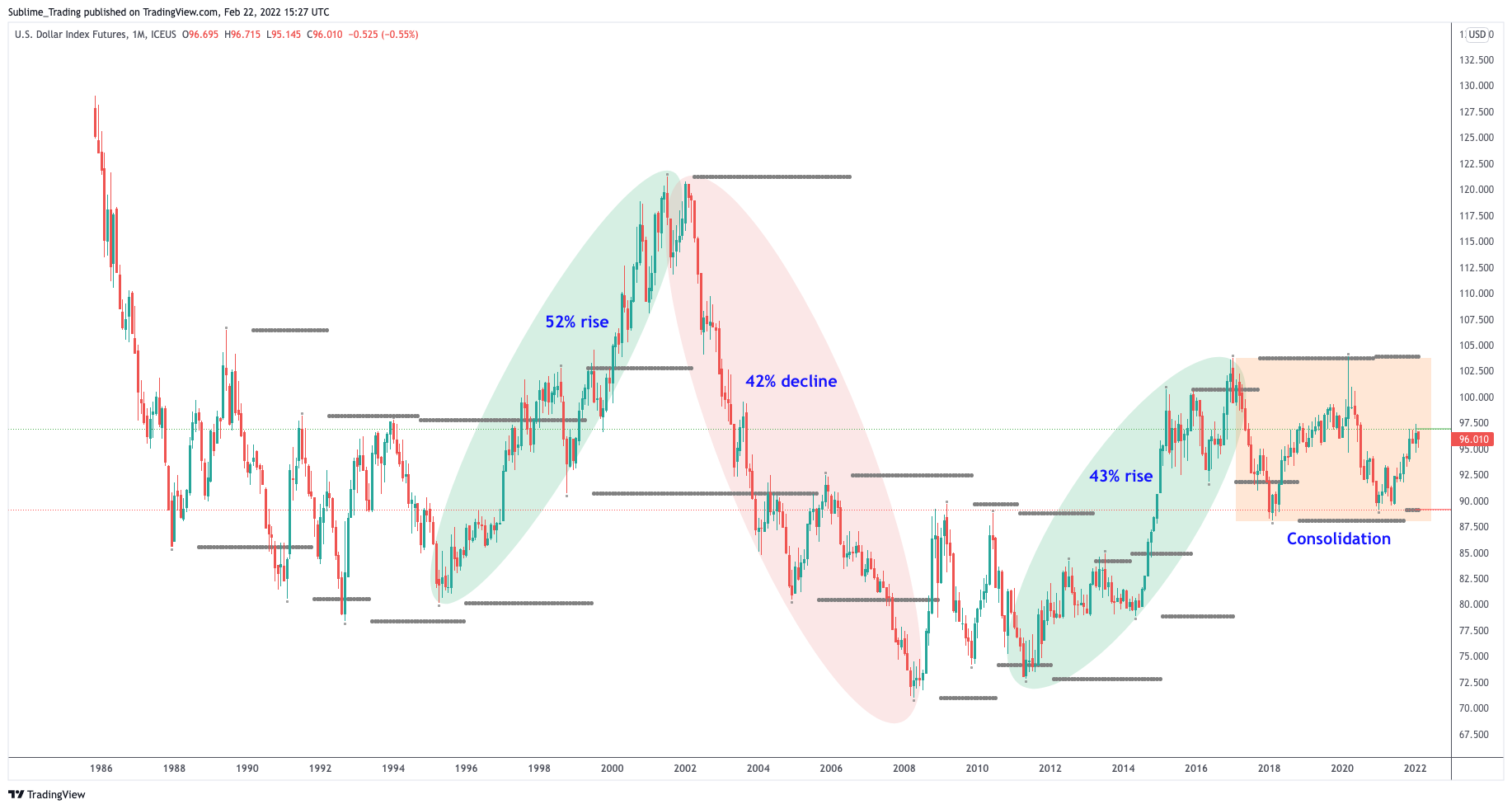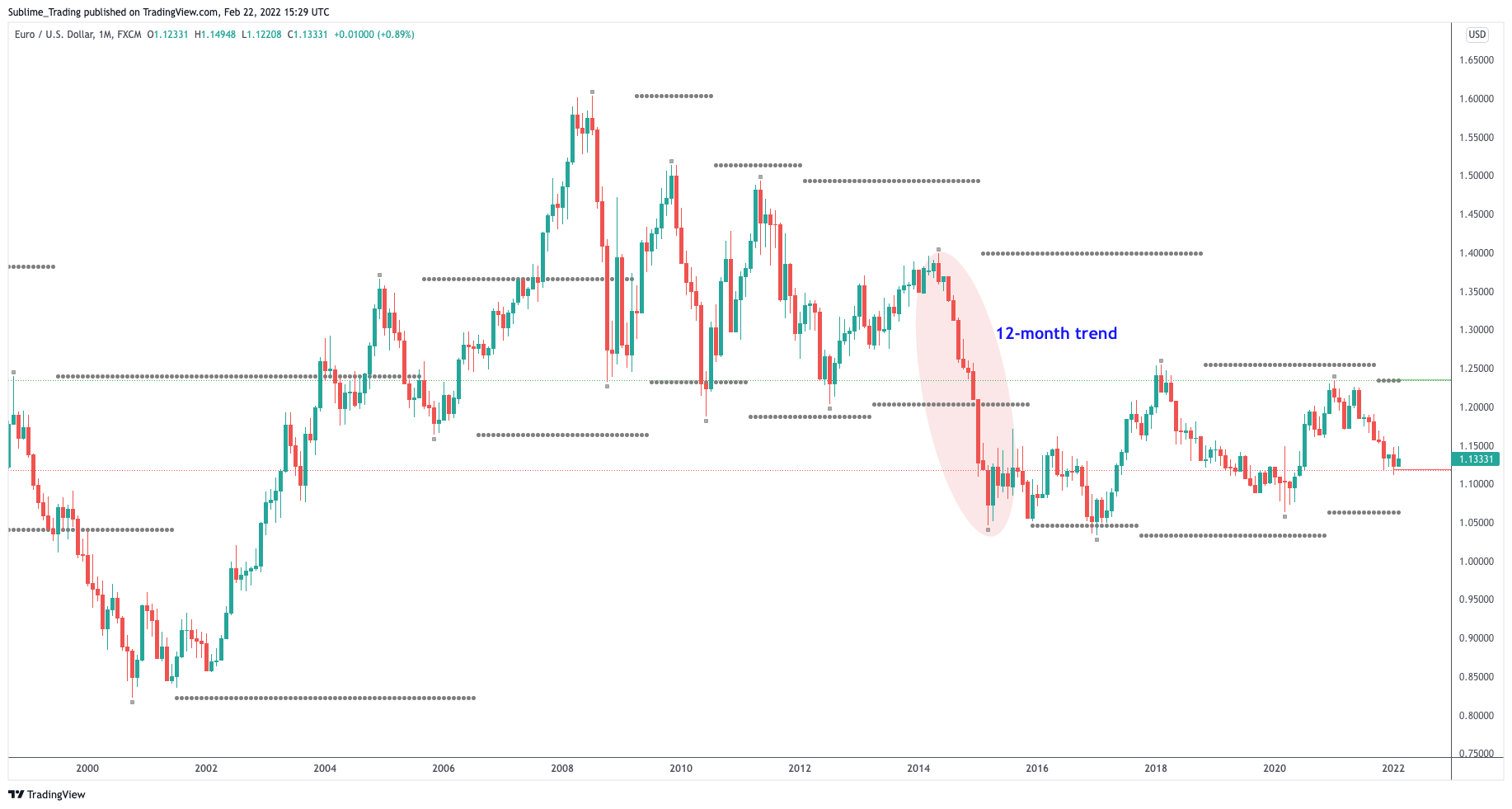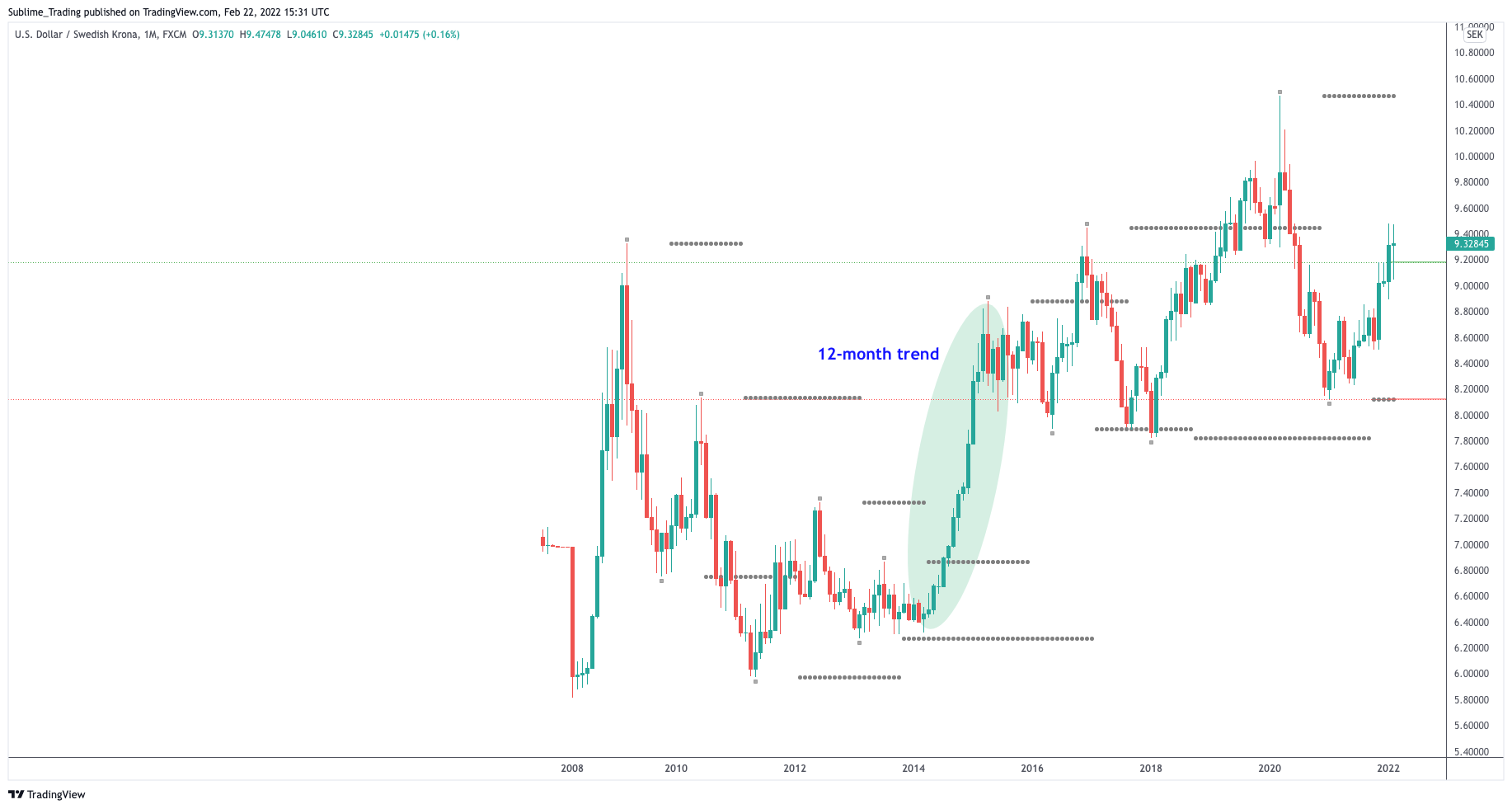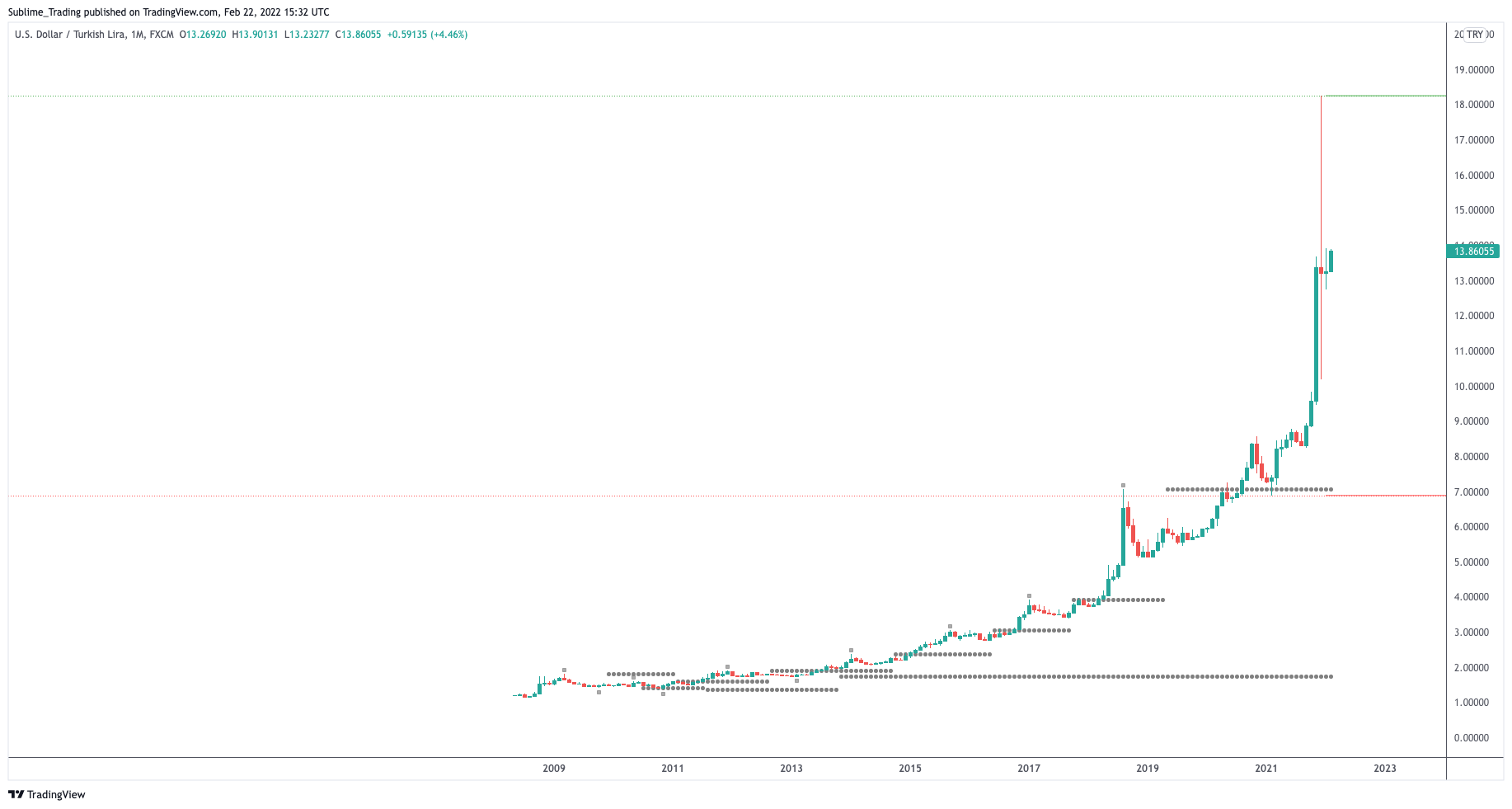Zinger Key Points
- If you know how to approach it as an investor, forex can add a lucrative stream of profit into your portfolio.
- Currencies move differently as they are paired— for example, the EURUSD or the GBJPY. As a result, the forex market's natural movement is cyclic.
- Feel unsure about the market’s next move? Copy trade alerts from Matt Maley—a Wall Street veteran who consistently finds profits in volatile markets. Claim your 7-day free trial now.
The foreign exchange (forex) market, also known as the currency market, is an interesting space for investment opportunities.
It undeservedly has a bad reputation, as the online space is cluttered with fake gurus pushing their quack day trading systems and get-rich-quick schemes.
It seems that the choice of quick riches has shifted to the crypto market, so what has become of forex?
Well, the forex market is huge, with trillions traded daily. If you know how to approach it as an investor, forex can add a lucrative stream of profit into your portfolio. You just need to be familiar with the unique characteristics of investing in currency pairs.
For example, stocks and indices tend to go up slowly over long periods and then aggressively correct. The S&P 500 climbed 33% in 2021 but fell by 12% in January, highlighting this.
Currencies move differently as they are paired— for example, the EURUSD or the GBJPY. As a result, the forex market's natural movement is cyclic.
Below is the monthly timeframe of the Dollar Index, which I have compressed. It looks like the price is trading inside an extensive range or consolidation. Look closely, and you will see that trends can last months to years within this large sideway market. The same can be said of periods of consolidation.

Here are some numbers:
- From 1995 to 2001, the price climbed by 52%.
- From 2001 to 2008, the price fell by 42%.
- From 2011 to 2016, the price climbed by 43%.
- From 2016 to today, the price has been trading inside a prolonged area of consolidation.
The above facts tell us that when it is in trend, the forex market is lucrative. It also tells us that we require patience to wait for these opportunities. This is why a diverse portfolio of stocks, commodities, forex and cryptos is essential. Never put all your eggs in one basket. You of course know that, but it is not always well practiced.
How Best To Use The Dollar Index
I use it similar to the S&P 500 for the U.S. market, the FTSE 100 for the U.K. market and Bitcoin for the crypto market: as a macro indicator of how the forex market is performing.
If the Dollar Index is trending, I then scan through the forex pair on my list and add the best opportunities in my portfolio. If the Dollar Index is consolidating, I then stand aside.
For example, during the trend between 2014 and 2015, the EURUSD and the USDSEK were top performers in my portfolio. I have both monthly timeframes below. Note how both have since been consolidating in line with the Dollar Index.
The EURUSD

The USDSEK

However, when the Dollar Index is consolidating, 'exotic' currency pairs are worth keeping an eye on as they can trend during times when the forex market as a whole is moving sideways. The TRY currencies are recent examples of that but do be aware of their volatility, usually fundamentally driven, hence why they are deemed exotics. I have the monthly timeframe of the USDTRY below.
The USDTRY

For now, my portfolio does not have any currency pairs, but if the Dollar Index breaks out of consolidation, which it is showing early signs of doing, then I will be sure to be taking positions on the best high-probability pairs.
If you want to know more about investing in the forex market, check out our website at sublimetrading.io.
© 2025 Benzinga.com. Benzinga does not provide investment advice. All rights reserved.
Trade confidently with insights and alerts from analyst ratings, free reports and breaking news that affects the stocks you care about.